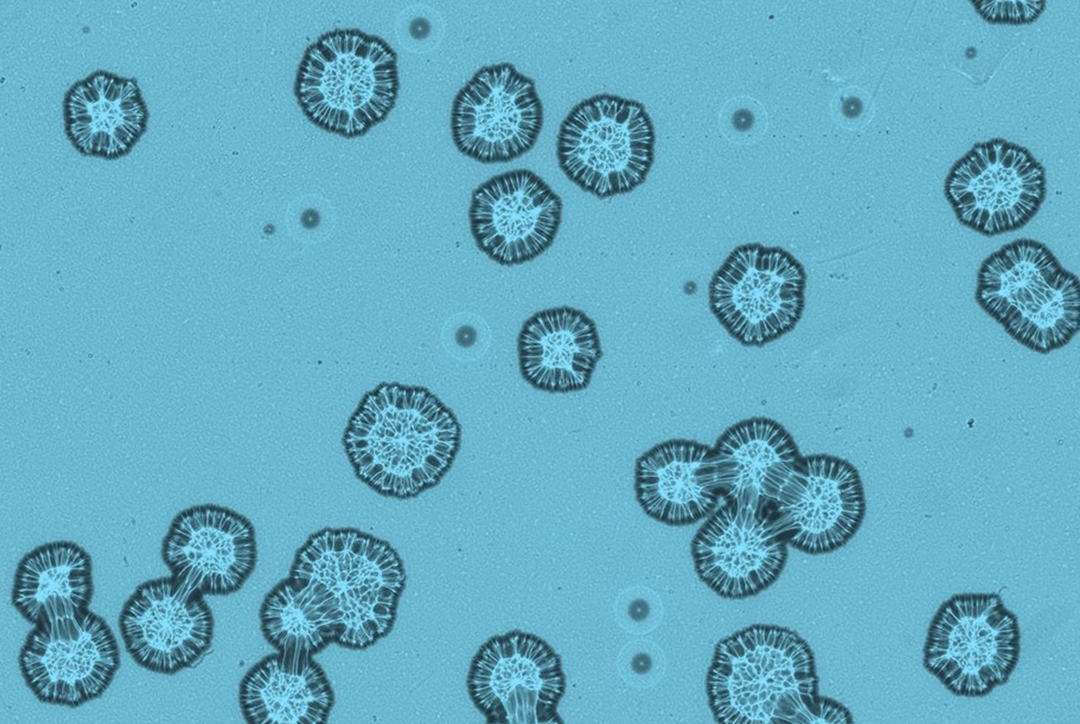Antibiotic sensitivity screening results in a quarter of the usual time
BAIO-DX is developing a new medical diagnostic tool that leverages artificial intelligence and lensless holographic imaging. The company’s augmented microbiological analyses can identify the bacteria responsible for infection, and then rapidly and automatically indicate the best antibiotic.

Lensless holographic image of Escherichia coli and Staphylococcus epidermidis. © BAIO-DX
To determine which antibiotics will be effective against an infection, biological samples are cultured, and then the bacteria present are identified using MALDI-ToF mass spectrometry. The BAIO-DX lensless holographic imaging device, coupled with artificial intelligence algorithms, accelerates this step. It continuously observes the Petri dish, detects bacteria as soon as they appear, and identifies them without sampling. It then performs an antibiotic sensitivity test.
With this technology, which can be integrated into existing lab processes, healthcare professionals are improving patient care by prescribing better-targeted antibiotics more quickly and slowing the onset of antibiotic resistance. Process automation increases the productivity of analysis laboratories, as well as the traceability and reliability of their operations.
BAIO-DX, created in January 2022, conducts tests on patient samples with a prototype in use at the Grenoble Alpes University Medical Center as part of a partnership. The startup, founded by one CEA researcher and one CNRS researcher, holds licenses to four CEA patents.
Key figure: 10 million
According to the WHO, antimicrobial resistance could cause around 10 million deaths worldwide by 2050.
Key markets
- Hospitals
- Private analysis labs
Technology used
- Lensless holographic imaging
- Artificial intelligence algorithms
Year founded: 2022
CEA institute: CEA Leti